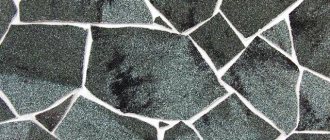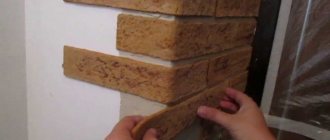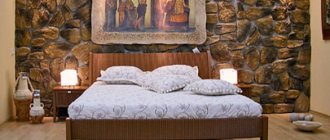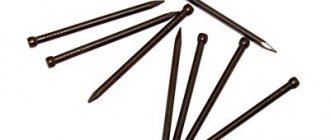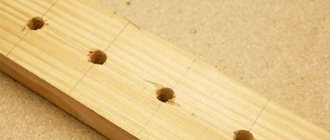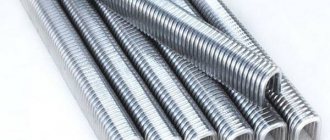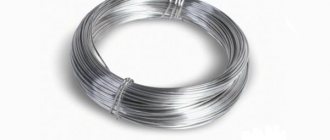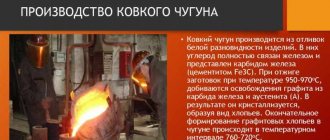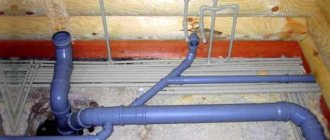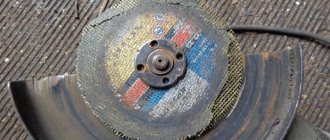Flexible stone is a relatively new material. During its existence on the market, it managed to gain popularity and the love of builders. It is distinguished by its natural origin and all the advantages of natural stone. We are talking about sandstone, which has the ability to bend due to the fact that the sand grains are loosely located and the surface has certain gaps.
Stylistic advantages of flexible stone for interior decoration
Flexible natural stone allows you to veneer surfaces of any shape. The base can be curved or even round. Another advantage is the wide selection of textures and colors. You can choose any pattern to match your interior style.
An additional advantage is the lack of ability to absorb moisture and fire safety. The material is produced from environmentally friendly components, which are characterized by breathability and do not emit harmful substances into the atmosphere. This allows the stone to be used even indoors where children are constantly present.
Experts also note the ease of installation. It is very easy to stick the canvas on. There is no need to use a professional tool to carry out the treatment. You can cut the stone with ordinary scissors. The sheets of this decorative finish weigh a little - from 3 kg per square meter. Sometimes this factor is decisive when the mass of the cladding should not exceed a certain value.
Pros and cons of flexible stone as a finishing material
The advantages of using sheet, roll or slab products as finishing include:
The first drawback is compensated by the environmental friendliness and beauty of the flexible stone, the second by a high-quality primer. Taking all factors into account, natural finishing is head and shoulders above all known materials.
Flexible stone is used for cladding architectural structures of complex shapes
Types of material
The material used in interior decoration can be made in the form of slabs or wallpaper. The first version of the cladding has a standard thickness of 0.25 cm. But the width and length can be different, depending on the needs of the buyer. For example, the smallest sheet may have dimensions of 5 x 60 cm.
You can choose slabs with MDF backing; in this case, the sheet thickness will be 0.6 cm, and the length and width will be 250 and 100 cm, respectively. Wallpaper in the form of flexible stone has a thin layer of sandstone on top on a textile base. Typically the canvas size is 120 x 260 cm.
We bend the unbending: flexible stone as a universal finishing solution for the interior
According to the majority of modern designers, of all the new materials, flexible stone is the most successful attempt to accurately transfer the texture of a natural material onto an artificial base. The starting material for its production is sedimentary rock, which is a monolith of clastic grains (up to 2 mm in diameter), called “sandstone”.
Flexible stone is not plastic. This is the thinnest section of natural sandstone, applied to a flexible base - fiberglass.
Flexible stone is produced both in the form of wallpaper (rolls from 2 to 2.8 meters) and in the form of tiles (50×600, 200×300, 600×300, 800×400 mm), which, when used skillfully, demonstrates enviable aesthetic results.
Like any other building material, flexible stone has its advantages and disadvantages. And, given that he has more of the former than the latter, first of all we will list his advantages.
What to choose as an adhesive
The stone is installed using special mixtures. The solution is excellent for tiles or porcelain stoneware. You can use a special cement-based composition and construction mastics. Universal PVA glue is suitable, which can be used for walls with high humidity. The structure of the stone after PVA dries is not disturbed.
The mixture is fireproof and ideal for interior work, as it does not contain solvents. After purchasing it, you can immediately use it for repair work. The mixture is odorless and can be applied using a brush or roller.
PVA adheres well and performs its role perfectly. You cannot start decorating a room with it if the operating temperature has dropped below 5 °C, while the maximum value is 30 °C. The solution hardens completely in 6 hours.
A primer-glue finish will also work; you won’t need stone installation services when using this mixture, because even an inexperienced craftsman will be able to handle the installation. This adhesive is specially designed for rooms with high humidity, where there are frequent temperature changes. This means that the composition can be used not only for internal, but also external work. For one square meter you will need about 350 grams of glue.
You can also purchase a frost-resistant adhesive finish, but you won’t need the services of a specialist either. This composition is not only suitable for indoor and outdoor use, but is also heat and water resistant.
Advantages and disadvantages of the material
An important feature of flexible stone is its ability to be mounted on any surface: a limited number of facade cladding materials are suitable for buildings with non-standard architecture, with rounded walls or rounded corners. In this case, flexible stone is the ideal solution to provide decorative and reliable cladding
In this case, flexible stone is the ideal solution to provide decorative and reliable cladding.
In addition, the significant advantages of this type of cladding are the following parameters:
flexibility. Thanks to this property, flexible stone slabs can be applied to any surface. Using a construction hair dryer for work, you can cover any bends at different angles with this material;
ease. The material is very light and can be applied even to the thinnest walls. In this way, not only a beautiful design of the wall is ensured, but the surface is also somewhat strengthened;
thermal stability. Due to this indicator, the material is not afraid of sunlight. Flexible stone is used for interior decoration even when decorating stoves and fireplaces;
moisture resistance. The material prevents moisture accumulation due to its porous structure;
decorativeness. A unique pattern is ensured by the random application of stone elements to the base. It is almost impossible to repeat the drawing. By adding various coloring pigments to the coating, not only brightness is ensured, but also the uniqueness of the design;
environmental friendliness. Due to the inclusion of natural components in the structure of the material, its environmental friendliness is ensured: the material does not emit harmful elements and is not allergic; manufacturability and ease of installation. Slabs made of flexible stone are easy to cut with construction scissors, are flexible and lightweight, due to which installation can be done with one hand without special training or specific tools;
preservation of properties over a wide range of temperature differences. Due to its heat resistance and relative frost resistance, the flexible material can be used in climatic regions where the air temperature can range from minus 40°C to +700°C;
durability. When properly used, the material can last more than 35 years.
To increase service life, it is especially important to treat the coating with special protective agents in the form of impregnations.
Like any building material, flexible stone has its drawbacks. The main criterion for refusing to perform this type of cladding is its high cost. Since the manufacturing technology of this material is quite painstaking, this is reflected in the price.
Compared to natural stone, flexible coating has a short service life (while stone cladding can last more than 70 years).
Another point that the consumer is not always happy with is the additional finishing of the coating. It will protect the material from external factors and extend its service life.
Installation tools
To carry out the work, you should prepare some materials and tools, namely:
- brush;
- contact glue;
- notched spatula;
- ruler;
- hydrophobic material;
- wooden hammer;
- mounting knife;
- pencil.
The surface must first be prepared. It is most convenient to apply the glue with a notched trowel. If the tile has impressive dimensions, the composition is applied with an even spatula, after which it is necessary to make grooves using a serrated tool.
Laying should begin from the top corner, as it may be necessary to cut off part of the trim, which is recommended to be installed in a less noticeable area of the room.
Work technology
The technology of applying “flexible stone” to a wall or other surface is not much different from wallpapering.
The tools you will need are: a metal square or ruler, a mounting knife, a notched trowel (tooth - 3 mm), a wooden spatula, a lint roller, a pressure roller (200 mm wide), a brush and a hair dryer. Thin-layer mortar mixtures of white or light gray color can be used as an adhesive mixture for gluing tiles inside or outside buildings. Depending on the specifics of the working surface, regular PVA glue or other mounting adhesives are used. Before tiling with “flexible stone” tiles, the base must be cleaned of moisture and various contaminants, and unevenness must be leveled. If you plan to apply “flexible stone” using mortar mixtures, cement or lime mortars are used to level the base. Before fixing the tiles using adhesives, including PVA, use gypsum plasters and putties.
“Flexible stone” plates can be laid on the base either end-to-end or jointed. In the first case, the “flexible stone” plates are glued overlapping, then a zigzag line is drawn with a sharp knife, cutting through both layers of the canvas. To eliminate the slightest errors, the surface is lubricated with a primer, after which the seam is rubbed with the front side of a piece of “flexible stone”. In the same way, creases are eliminated when decorating corners. As a result, the surface being pasted looks like a single whole. The design of surfaces with plates of “flexible stone” with jointing looks very impressive, and the seam can have either the color of the base or be covered with silver or golden moldings.
Since the “flexible stone” consists of 90% quartz sand, its surface consists of many compressed grains of sand. If the material is used for exterior decoration of a building, it should be protected with a composition for mineral bases used outdoors. A primer or other composition will protect the material from moisture, abrasion and aggressive environmental influences. After this procedure, walls and columns can be safely washed without fear of damaging the coating.
Considering the novelty of the material, “unfashioned” by designers, TV shows and the Internet, its very presence in the interior will make the decoration exclusive. Moreover, everyone will be able to become a discoverer, finding a new original use for the “flexible stone”.
- Photo 1
- Photo 2
- Photo 3
- Photo 4
- Photo 5
- Photo 6
- Photo 7
- Photo 8
- Photo 9
Photo 1. An adhesive composition is prepared from the selected dry mixture in accordance with the manufacturer's instructions. Photo 2. Before tiling the surface, tiles are first laid out taking into account color and size. Photo 3. If necessary, the “flexible stone” is cut from the back side of the tile using a mounting knife and guide metal ruler (square). Photo 4. The adhesive composition is applied to the prepared and cleaned surface using a notched trowel (tooth - 3 mm). Photo 5. The tile is laid on the glue and pressed into it with a pressure roller, being careful not to stain the edges with the mixture. Photo 6. When tiling the corners, the tiles at the bends are heated with a hair dryer and pressed with a wooden spatula. Photo 7. It is advisable to lay the tiles from the top corner, since when cutting the tiles, it is better to install its fragments in a less noticeable area. The thickness of the “flexible stone” (2–4 mm) does not require grouting the joints with a fugue. The jointing is carried out immediately after gluing the tiles using a damp brush to the width of the seam. Photo 8. To improve the performance characteristics of the material, after gluing it should be treated with a primer or water-based varnish. Photo 9. To make the seams invisible, “flexible stone” plates are glued overlap, then use a sharp knife to draw a zigzag line, cutting through both layers. The surface is lubricated with a primer and the seam is rubbed with the front side of a piece of “flexible stone”.
Installation of flexible stone
Using a spatula, apply the adhesive to the tiles and the wall. You should start work from the top corner. As soon as the tile is on the wall, it must be pressed tightly. If necessary, decorative elements are knocked out with a wooden hammer.
After completion of the installation work, when the glue has dried, the surface of the stone is treated with a hydrophobic compound, which protects the material from moisture and aggressive environments. These works are carried out with a brush or roller.
Decorative material can be laid in one of several ways. Seamless technology looks the most impressive. To do this, you will need a construction hair dryer, with which the edges of the tiles are melted. To design uneven surfaces that have non-standard shapes, the material is also heated.
“Wild stone” installation technology
Wild stone allows you to create an imitation of masonry from untreated stone.
This method of installing flexible stone allows you to create an imitation of masonry from untreated stone. This method is good for decorating not only the facades of houses and fences, but also for interior decoration. This technology involves creating rough outlines that imitate the natural shapes of stone.
Finishing stages:
- Preparation of the surface for installation of the material: cleaning of old coating and dust, priming the surface.
- Applying markings on the back side of the material, depicting fragments of various shapes of future stones.
- Cutting out elements along the marked lines.
- Gluing elements to the wall with gaps of up to several millimeters.
- Grouting joints.
- Coating the walls with a water-repellent primer or acrylic varnish.
Interesting styling ideas
Flexible finishing can be used using interesting design solutions. For example, the stone is not laid on the entire wall, but only on a separate part of it. For example, you can focus on the shelves, which will be located on an island made of stone, the color of which is different from the shade of the main walls.
Sometimes such cladding is installed together with photo wallpaper. A beach with palm trees in the photo, which are surrounded by stones with a rough texture, will look good.
If you have a fireplace in your house, then this will make the warm corner of your home even more colorful if you use flexible stone for interior decoration. However, in this case, it does not need to be mounted on the entire surface of the walls, but only on the area where the heating device is located.
A rather bold solution is the approach where a flexible stone imitates something like a scattering of sand. This effect can be achieved thanks to the incredible flexibility of the material. For interior decoration, you can use a material that imitates leather. This will make the office presentable and attract new clients.
Flexible stone: advantages and unique properties of the material
It is almost impossible to briefly describe all the properties of flexible stone. If we generalize and compare it with its natural analogue, then only one thing can be said - flexible stone combines all the advantages of natural stone, as well as the advantages that modern technologies give it. If we list all the advantages of this material, the list will be quite impressive. Therefore, we will mention only the main advantages that have a direct impact on its installation and operation.
- Flexible stone is an absolutely harmless material for humans; it does not emit any harmful, volatile substances.
- Light transmission. If you look through it at a lamp, it glows. What does this give? By placing a lamp behind such a pebble, you can achieve a rather interesting effect. In addition, ultraviolet light penetrating through the flexible stone does not allow fungal and mold microorganisms to settle behind it.
- Durability. A serious manufacturer of this product provides a guarantee of 35 years or more. Here, the flexible artificial stone is much inferior to its natural counterpart, but is far ahead of other options for artificial stones.
Flexible stone photo
In my opinion, these properties are quite enough to give preference to this material and refuse to use bulky and effortless cement or gypsum artificial stone when laying.
Flexible stone for interior decoration photo
Production of material
The base is textiles and polymers, which are covered with sandstone. At the first stage of production, sections are selected and prepared that will have a unique ornament. The artificial soft stone is polished at the next stage, and then an acrylic mixture is applied to the base. Fiberglass or textiles are glued onto the supporting base, after which the base is removed, and the material itself is sent to the drying stage.
Since the main task of production is the choice of cut, the production of artificial stone requires expensive equipment. Sandstone layers are laid on resin or adhesive. Once the textile is removed, the layer is dried and subjected to processing and then inspection.
2.Production technology
This interesting material was invented in Germany, and the process of its production involves two possible places of production - directly in quarries or in special workshops. These processes differ in the method of applying the last, third layer, that is, the pattern.
The first option is quite painstaking and specific. To produce in a quarry, you must first find a suitable source with interesting rocks, then prepare an even cut of sandstone with a beautiful natural pattern, polish it to achieve an almost perfectly smooth surface. After this, a special deep penetration adhesive solution is applied to the prepared area. For these purposes, binders based on epoxy resin are used. A thin layer of textile base is applied to the impregnated surface, the material is carefully smoothed to avoid the appearance of wrinkles and left until completely dry.
It is very important to let the material dry completely so that when removed, all the grains of sand remain on the base and do not stick in separate places. It is very difficult to remove the sheets, because they are very thin
For this purpose, special equipment is used, which, as it were, cuts off the top layer of the stone surface along with the base. This produces a flexible sheet that completely copies the color and is environmentally friendly.
The advantage of this type of production is the completely natural origin of the material. But there are a number of significant disadvantages:
- Searching for a suitable quarry, which in fact may not happen as quickly as we would like;
- Small variety of colors and textures;
- Large expenditures of time and money to prepare a suitable surface;
In the case of production in specialized workshops, everything happens much faster. The pattern is formed artificially by mixing several types of components. This method has a lot of advantages, but so far no disadvantages have been discovered:
- There is no need to look for a career;
- The color scheme and texture are very diverse and practically unlimited;
- The appearance of the surface is 100% similar to natural rocks;
- Only natural ingredients are used for production.
Flexible marble
Artificial flexible marble is well suited for the decorative design of interiors, partitions and light walls. It is made from marble chips and acrylic polymers. The material weighs only 3 kg per square meter. It is versatile, easy to install and resistant to aggressive environments.
Flexible marble (flexible brick) has the ability to breathe. The trim is a set of bricks that are pressed into the construction fiberglass mesh. Its size is 0.5 square meters. It is based on quartz chips and an acrylic binder.
If you want to decorate a room with piece bricks, bricks made from marble chips will suit you. With its help, you can decorate not only smooth surfaces, but also non-standard decorative elements. The basis can be different materials: fiberboard, plaster, chipboard, heat block.
Flexible stone in the interior: let's talk about its characteristics
Flexible stone has a high degree of elasticity and flexibility, which makes it possible to veneer complex curved surfaces. This is a lightweight material, a square meter of which weighs no more than 4 kg. The surface lined with it does not lose its appearance over a wide temperature range (-45... 650 °C). It is environmentally friendly, does not emit harmful chemical compounds and does not burn.
Flexible stone is easy to process: it can be cut with any sharp tool and made into parts of complex configurations.
Advantages of flexible stone:
- After treating the lined surface with acrylic and silicone primers, the flexible stone acquires water-repellent properties. Its surface does not become dirty.
- The porosity of the material allows it to easily allow steam to pass through, making the walls of the building “breathe.”
- Flexible stone does not accumulate static electricity, which makes cleaning the surface easier.
- Its long service life and relatively low cost make it an attractive material for finishing work.
- Light transmission allows the use of flexible stone in interiors with original lighting design.
Any building material, regardless of type and cost, has advantages and disadvantages. As for decorative flexible stone for finishing facades, its obvious advantages include:
- Absence of substances harmful to the human body;
- Easy installation;
- Impact resistance – soft material is difficult to break accidentally;
- Wear resistance - flexible stone is not afraid of ultraviolet radiation, does not wear off or erode;
- Moisture resistance – the material almost does not absorb water;
- Low water permeability;
- High level of fire resistance;
- Light weight;
- Lack of special care;
- Long service life;
- Preservation of all qualities at temperatures from -45 to 650C;
- The flexibility of the material allows you to give the façade the most unpredictable configurations.
The versatility of the material, combined with the fact that it can be used to implement bold design solutions, has undoubtedly made it a leader in the market of building materials used for finishing the facades of houses.
True, an impressive list of advantages does not mean that flexible stone is without disadvantages. More precisely, it has only one drawback - high cost. It is almost equal to the cost of natural stone
However, if you take into account all the advantages, then the price of the material can be ignored
Produced in accordance with the standard, flexible stone for facades has strict technical and operational parameters:
- Weight of 1 m2 no more than 4 kg;
- Withstands temperature changes over a wide range;
- Ability to create lumen;
- Visually natural structure;
- Not subject to combustion;
- The outer side is made of natural material;
- Frost resistance (over 100 freezing cycles);
- Vapor permeability 0.005 mg/m/h Pa;
- Polymer dispersion as a binder (8%).
The above characteristics refer to GOST 3044-94. When purchasing, you should check the product quality certificate. This guarantees high quality indicators of the purchased material, its elasticity and the absence of harmful impurities or solvents.
Construction of houses
0 votes
+
Vote for!
—
Vote against!
Flexible stone, which is the most successful attempt to recreate a natural material, despite its relatively recent appearance on the construction market, continues to gain its well-deserved popularity. Flexible stone attracts the attention of not only builders, but also designers who give preference to exquisite building materials of natural origin, attracting attention not only with quality, but also with price. The material, which is a section of sandstone connected through a polymer to a textile base, is not only characterized by visual similarity to natural stone, but is also in no way inferior to its original prototype in terms of wear resistance. There is no point in mentioning the decorative qualities; they are in many ways superior to natural stone, which is also of no small importance in the growing popularity of the material. So, let's talk about flexible stone. Its advantages and disadvantages, as well as the features of installing flexible stone at home - all this will be discussed in detail in this article, after reading which you will receive answers to all existing questions about flexible stone.
Content
- Flexible stone: manufacturing technology
- Scope of application of flexible stone
- Advantages of flexible stone and its unique characteristics
- Material Specifications
- Flexible stone installation technology: features and little-known nuances
- How to use flexible stone in the interior?
Flexible stone: manufacturing technology
The uniqueness of flexible stone begins with its manufacturing technology. The production of this unique material is carried out manually, directly at the site of sandstone extraction, which is the raw material for its production. Usually these are quarries, or an area nearby. Specialists in the production of flexible stone select suitable sections of the original mineral of the appropriate texture, and then polish them until they reach their ideal smoothness.
Next, in the process of work, an acrylic dispersion is used, which is applied to a previously prepared base, and textile material is glued. Small particles of sandstone stick to it, leaving an imprint of the natural texture of sandstone on the textile base. After waiting for the acrylic dispersion to harden, the base is removed and dried in the sun. The use of acrylic dispersion allows not only to firmly glue sandstone particles, but also to achieve ideal strength, flexibility and wear resistance of the newest building material - flexible stone. The manufacturer prefers to produce newfangled material in the form of tiles or wallpaper, the length of which varies from 2 to 2.8 meters.
Scope of application of flexible stone
All of the above qualities, complemented by the natural naturalness and high decorative characteristics of the material, make it possible to expand the scope of its use. It is actively used for architectural decoration of building facades, cladding of internal walls in premises of any purpose, including those where there is high humidity, as well as in the process of cladding decorative arches and columns, design of staircases, fireplaces and bar counters.
Advantages of flexible stone and its unique characteristics
- Flexible stone, which a builder of any social level can afford to buy, is considered an absolutely harmless material due to the fact that it does not emit harmful volatile substances during its operation;
- Flexible stone is characterized by ease of installation and low water permeability. Despite this, its porous structure allows the flexible stone to be one of the most vapor-permeable materials and has a low tendency to burn;
- Lightness (3−4 kg/m2), recognized as one of the main advantages of flexible stone, allows it to be used in the process of finishing the facades of residential buildings and premises, as well as for protecting load-bearing structures;
- Antistatic properties also cannot be ignored, as they make the material easy to care for and no need for specialized care measures;
- Long service life and acceptable price level, achieved by increasing the number of companies involved in the production and supply of flexible stone to the construction market;
- High plasticity, which can be verified by exposing the stone to even low temperatures, during which it will demonstrate the ability to take on various configurations;
- Light transmittance, which provides the material with unique decorative characteristics, thanks to which flexible stone can be used in the process of creating interiors with a unique lighting design.
Flexible stone photo
Material Specifications
Flexible stone is supplied in the form of slabs or wall wallpaper, characterized by different widths and lengths. The most common parameters for length are: 5×60, 20×30, 60×30, 80×40 and 260×130 cm; in addition, individual companies produce material in individual sizes. To cut stone, it is enough to use a simple construction knife or scissors, which do not cause cracks during the cutting process. In addition, using this method, you can achieve any material configuration you need.
Main technical characteristics of flexible stone
- Elasticity, natural texture and flexibility;
- Lightness, as evidenced by its indicators - 3-4 kg/m2;
- Absolutely non-toxic and non-flammable;
- Wide range of operating temperatures – from – 45 to 650 degrees;
- High frost resistance;
- Installation on any surface;
Flexible stone installation technology: features and little-known nuances
- Installing flexible stone is in many ways similar to gluing wallpaper. In the process, you will need a notched trowel, a hair dryer and a rubber roller. Specialized adhesive-based mixtures are used directly for mounting on the wall, as well as mortar mixtures offered by specialized hardware stores and manufacturing companies. Before you begin installing the material, you must make sure that the surface to be mounted is absolutely flat, without any flaws or roughness. If the surface does not meet the specified requirements, it is necessary to pay due attention to its preliminary preparation, which consists of the following:
- The mounted surface is thoroughly cleaned of all existing dirt and moisture. If it is characterized by the presence of various irregularities, then before direct installation, in addition to cleaning it, it is necessary to carry out leveling, for which special leveling mixtures are used;
- Adhesive compositions are applied to the wall or tile surface using a notched trowel. If the glue needs to be applied to a larger surface, experts advise using a level trowel, then applying additional grooves using a notched trowel. The unevenness of the textured mixture used provides additional adhesion of the material to the wall surface.
- Installation of flexible stone tiles or wallpaper can be carried out either end-to-end or overlapping. The first installation method allows you to obtain a seamless surface. In this case, excess material is removed using a sharp knife, and priming and processing of joints is carried out using a cut of flexible stone. If the tiles are fastened using the second method, then one of the stages of installation work should be sealing the seams, carried out after the adhesive mixture has completely dried. To do this, experts recommend using moldings, which are decorative cast parts in the form of cast strips, and filling the remaining gaps with an adhesive composition.
- It is worth noting that the most advantageous is the “seamless” method of laying flexible stone with your own hands, which has the most effective decorative characteristics. During its installation, it is necessary to use a construction hair dryer, which is necessary to heat the edges of the flexible stone. During this event, you can easily change the configuration of the tiles, as a result of which flexible stone can be used for finishing columns, arches, as well as surfaces with a complex geometric configuration
- Experts advise starting laying tiles from the top corner, which is due to the need to trim the tiles, which are subsequently best used in the most inconspicuous places.
- The tile is applied to the surface of the wall, after which the next tile is pressed tightly and laid and this continues until the entire surface is lined with flexible stone. If necessary, the tiles are knocked down with a hammer to give them greater adhesion to the surface.
- In order to carry out high-quality cladding of corners, you will need a construction hair dryer, with which you heat the canvas at the corner of the tile fold. After this, it is wrapped and pressed tightly with a wooden spatula, which ensures the tightest fit of the material.
- If cracks have formed during this work, they can be repaired using colorless acrylic primer, intended for mineral surfaces of various origins and penetrating deep into the crack. After applying the primer, the area can be cleaned with a flexible stone, and if the need arises, the primer can be reapplied.
- Having completed the installation work and waited until the glue has completely dried, the surface of the tile is treated with a specially designed hydrophobic composition, designed to protect the surface from aggressive environmental influences and excess moisture. The composition is applied to the surface using a roller or wide brush.
The surface, decorated with flexible stone, is characterized by high aesthetics and excellent decorative characteristics, which will create an atmosphere of home comfort and harmony in the room.
Flexible stone video
How to use flexible stone in the interior?
In the interior of an apartment, flexible stone, the price of which is justified by its highest quality, can be used in a variety of directions, due to its high performance characteristics. It is capable of completely replacing the usual tiles, which have long become boring and have ceased to impress particularly demanding consumers. The most successful has been its use for finishing surfaces that are characterized by the absence of deformation and a more or less simplified configuration, be it plastered walls, metal, plastic or surfaces of any other nature. The high vapor permeability of flexible stone, due to which a comfortable microclimate is created in a room decorated with flexible stone, makes its use appropriate for decorating bedrooms and children's rooms. The presence of acrylic binders in the structure of flexible stone ensures the material’s resistance to aggressive external influences without disturbing the original configuration. This determines its frequent use in the finishing of kitchens and other rooms whose microclimate is characterized by high humidity.
The absolute non-flammability of the material and the absence of fumes harmful to the human body determine its widespread use in the lining of fireplaces, as well as for finishing premises that are subject to high fire safety requirements.
The light-penetrating ability of flexible stone is another advantage of the material, thanks to which, using all the delights of the latest technologies, you can bring to life the most daring design solutions. For example, placing a lamp under a flexible stone will create an indescribably intimate and relaxing atmosphere in the room.
Good news for those who like consistency will be the long service life of flexible stone, by choosing which you can forget about repairs for at least 30-35 years.
For those who are interested in using flexible stone in the interior, watching the following video will be especially relevant.
Description and variety
To understand why the material is named this way, it is enough to know what it is. It is based on flexible material such as fabric, high-temperature polymer, fiberglass. And the stone is a thin layer of 1 mm of any sandstone. That is why this material is called flexible stone. The disadvantages of this modern finishing option are insignificant, especially in comparison with its advantages.
Initially, the manufacturing technology was invented in Germany. The essence of production is to cut off a thin layer of sandstone, from 1 to 3 mm, and apply it to a flexible base using a binding polymer, for example, acrylic glue. Depending on the thickness of the cut, the following options for flexible stone are distinguished:
1) a slab measuring 1 m by 2.5 m and having a thickness of up to 6 mm;
2) tiles of different but small sizes with a thickness of about 2.5 mm;
3) roll with the minimum application of 1 mm.
A layer of sandstone can be applied both at the site of its extraction, and in workshop production conditions, and even at home. In the first case, the production of flexible stone looks like this:
— The sandstone surface is prepared, previously selected for its decorative qualities.
— A binder is applied and the fabric base is attached to it.
— After drying, the base, along with stone chips that perfectly match the texture of the surface, is removed, and a flexible stone is obtained. The disadvantages of this method are that it depends on weather conditions.
